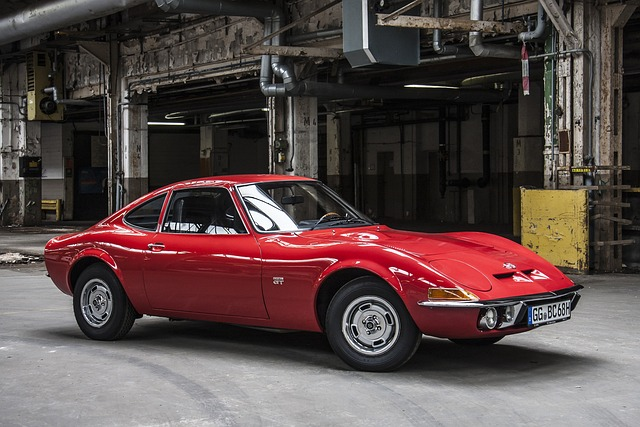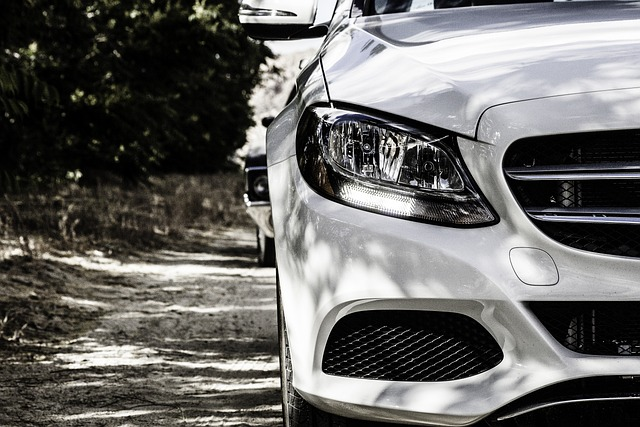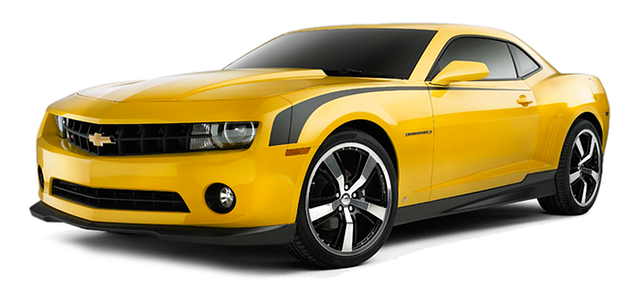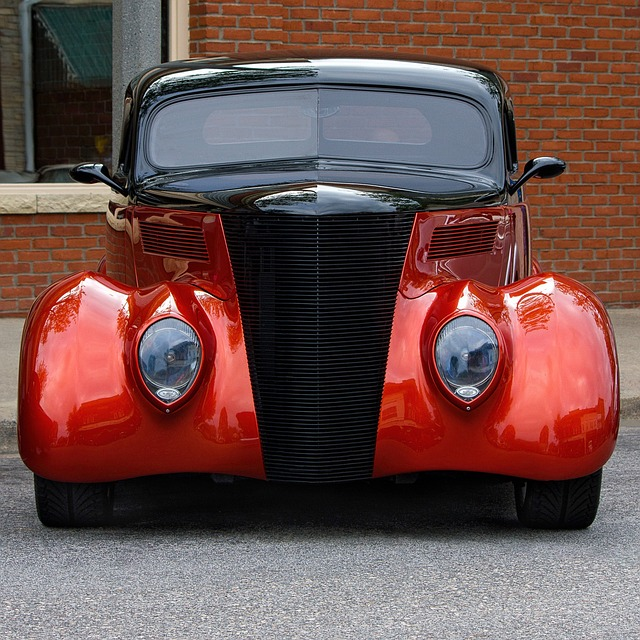New Address Now Open: 10040 Daniels Interstate Ct., Fort Myers, FL 33913.

Have you ever noticed just how hot the interior of your car can get? Have you ever wondered why it’s so much hotter in certain cars than others? The color of your car could be the secret behind why the interior of your car gets so hot. In this article, we’ll explore why the color of a your model of car has an effect on the temperature inside.
Heat likes to absorb into dark colors, and if your car is black or any other dark color, that heat will be drawn right into the interior of your vehicle. This means that when you leave your car parked in direct sunlight, it won’t take long before you feel like you’ve stepped into an oven! But it doesn’t have to be this way – there are some ways to help keep your car cooler and more comfortable during hot days.
If you’re looking for ways to keep yourself cool while driving around in your vehicle, this article will provide some useful tips on how to reduce the heat inside without having to buy a white or light-colored car. Keep reading to find out more about why the color of a car affects its temperature and what you can do about it! We will discuss the wide selection of color palette options and how they impact your cars interior temperature.
The Science Behind Car Color Temperature

The color of a car is more than just an aesthetic choice; it also affects how hot the interior of the vehicle will become. Different automotive paint colors absorb and reflect heat differently, meaning that some colors are hotter than others. Solid paint colors, for example, are made from pigments that absorb more light energy and therefore create more heat. Candy paints and pearl paints contain special reflective agents that help minimize the amount of heat absorbed by the car’s surface. To illustrate this concept, consider a black car parked in direct sunlight on a hot summer day—it will be much warmer than a white car parked in the same conditions.
How Car Color Affects Heat Absorption

Darker car paint colors, such as black and navy blue, absorb more heat than lighter colors like white and silver. This is due to light reflecting off of the car’s surface. The darker the color, the less light that is reflected resulting in more heat absorption. Chameleon paints can also be used on cars to reflect back an even higher amount of light and further reduce the amount of heat absorbed.
Another factor that influences car color heat retention is the type of paint used. Metallic paints are known for reflecting more light than non-metallic paints, resulting in less heat absorption overall. Additionally, a high gloss clear coat may help to increase the car’s reflective properties by allowing for maximum reflection of sunlight. On the other hand, low gloss clear coats can scatter light which can cause more heat absorption than a glossy finish would allow for.
Factors That Influence Car Color Heat Retention
The color of a car’s paint can have an effect on how much heat is absorbed by the interior, and the electric blue hue is no exception.
Car Paint Color
Car paint reflects some of the sunlight’s energy, so it can affect how hot the car’s interior gets. Darker colors like black or navy blue tend to absorb more heat than lighter colors like white or silver due to their higher levels of absorption. This means that lighter colors may be better for those who want to limit their car’s temperature during hot months. Additionally, certain materials such as metallic-based paints are more reflective and therefore better at reducing temperatures inside a vehicle.
Angle Of Light
The viewing angle of the sun and the surrounding environment can also influence how much heat is retained in the car’s interior. Many manufacturers offer hundreds of colors to choose from, so drivers are able to pick a color that will provide more protection against heat retention.
Darker Colors In Automotive Exteriors

It is often assumed that darker paint colors will make the interior of a car hotter, however this is not always the case. Darker colors may be found on luxury cars or limited edition vehicles, but these cars have been designed with the intention of providing superior temperature control within the cabin. In fact, the first time you drive a car with a darker color exterior, you might be surprised to find that it isn’t any hotter than driving a light colored car.
The truth is that heat buildup in an automobile is related to materials used in its construction and insulation, not necessarily because of its paint color. Darker colors do absorb more heat energy from sunlight, but this does not necessarily translate into higher temperatures inside the vehicle. The amount of heat transferred from outside to inside depends greatly on how well insulated and air conditioned the car is.
Light Colored Exterior Paint Options

Light paint shades not only keep your car cooler but also offer other benefits. Solid paint hues are more durable and easier to maintain than metallic or pearlescent paints. They resist fading, chipping, and scratches better than darker colors. Additionally, they tend to be less expensive due to their popularity among car owners.
The benefits of selecting a solid paint shade are numerous and can make your car look great while keeping it cool at the same time. With this knowledge, you can select a color that will look great and provide maximum comfort on hot days. It’s important to remember that lighter exterior paint options may require more maintenance and upkeep than darker shades, so if you’re looking for an easy-care option then dark colors may be best for you.
Benefits Of Selecting A Solid Paint Shade
Choosing a solid paint shade for your car can offer several benefits:
First, it will help reduce the amount of sunlight entering the interior of your car, making it cooler and more comfortable on hot days. This is because darker colors absorb more light than lighter shades, thus reflecting less heat into the vehicle.
Second, a solid paint job won’t require regular maintenance such as waxing and polishing like other finishes do. A single coat of paint typically lasts for years, so you don’t have to worry about frequent upkeep costs.
Finally, a solid color is easier to match with accessories and trim pieces like wheel covers or side mirrors. This can make it easier to create a unique look that stands out from the crowd. With these advantages in mind, it’s easy to see why selecting a solid paint shade is an excellent choice for your car. These same benefits also apply to chameleon paint finishes, which offer even more customization potential.
Advantages Of Chameleon Paint Finishes
Astonishingly, there are many benefits to selecting a chameleon paint finish for your vehicle. To begin with, this type of finish is both visually stimulating and reflective. While the colors will be constantly morphing and shifting according to the environment, you can be sure that your car will always stand out from the crowd. Moreover, since chameleon paints come create an optical illusion created with light, they can also help reduce the temperature inside your car’s interior.
The reflective nature of these finishes will reflect UV rays away from the vehicle, thus resulting in less heat buildup inside the cabin. In addition to this, these paints are made from materials that have been specifically designed to repel heat, making them ideal for keeping your car interior cool during those hot summer days. As an added bonus, they tend to last longer than traditional solid paint finishes because they are better able to withstand wear and tear over time.
When it comes to keeping your car interior cool, a chameleon paint finish is a great choice. Not only does it look stunning but it will also protect you against the harsh effects of sun exposure while helping keep temperatures down inside your vehicle’s cabin.

Benefits Of Using Candy And Pearl Paints
Candy and pearl paints are popular choices for car owners looking to give their vehicle a unique look. These types of paint jobs not only provide an eye-catching aesthetic, but they also offer several benefits to the owner.
Firstly, candy and pearl paints reflect light better than regular paint, giving vehicles a glossy look that stands out from the crowd.
Additionally, these paints are more resistant to scratches and fading than other types of paint. This makes them ideal for those who want to keep their car looking brand new for longer.
Finally, candy and pearl paints can help keep the interior of a car cooler in hot weather. This is due to the fact that they absorb less heat from the sun than standard solid colors.
High End Luxury Cars And Their Paint Colors
The color of a car can make a big difference in the interior temperature. Darker colors on metal, such as black and dark blues, absorb more heat from the sun than lighter colors like white and light blue. This makes the inside of the car hotter on hot days, especially if it is parked out in the sun. Luxury vehicles are often painted with more expensive paint to give them a glossy finish. This type of paint also absorbs more heat so it can make the interior even hotter.
High end luxury vehicles often come in more unusual paint colors like candy and pearl paints. These paints are made up of multiple layers which help create an even glossier look that stands out from other cars on the road. They offer various custom color options for the buyer but just like darker colors, these paints will absorb more heat making the interior of the vehicle warmer than usual.
Low Gloss Vs High Gloss Color Options For Cars
Low Gloss Colors
Low gloss car paint colors generally provide better protection against the elements due to their low reflectivity. This means that the car’s body will stay cooler in direct sunlight, which can help reduce interior temperatures.
Additionally, low gloss colors are less likely to show dirt or wear over time, making them a more affordable and good choice for those who want a car that looks newer for longer. On the downside, low gloss colors may not be as eye-catching as their high gloss counterparts and may make the car look dull or boring.
High Gloss Colors
High gloss colors offer an eye-catching shine that can make a car stand out from the crowd. These colors are brighter and also easier to clean since they don’t absorb dirt and dust as easily as low gloss paints do.
However, their reflective nature can lead to higher interior temperatures due to the additional heat absorbed by the vehicle’s body panels. High gloss paints also require more frequent upkeep such as waxing and polishing in order to retain their shine over time.
Conclusion
The car color you choose for your automotive exterior can have a major effect on the temperature of the interior. The science behind car color temperature is complex, but at its essence, darker colors tend to absorb more heat than lighter colors. Factors such as viewing angle and the type of paint used can also influence how much heat is retained. As a driver, it’s important to consider these factors when selecting the perfect hue for your vehicle.
Ultimately, it’s up to you to decide which option works best for your needs and budget. Choosing the right car color can be intimidating but with some research and guidance, you can find a perfect blend of style and practicality that’s sure to keep your car looking great and running cool in any weather


